
David Holman
-
Posts
4,153 -
Joined
-
Last visited
-
Days Won
114
Content Type
Profiles
Forums
Resource Library
Events
Gallery
Blogs
Store
Community Map
Posts posted by David Holman
-
-
Three link/screw link on AT, Weshty. Have used Dinghams and Kaydees in the past. Considered Dinghams, but the turntables preclude this as they are one way only. Three links I can cope with, screw links a regular cause of expletives especially when between two coaches or vans!
Alpraham Sidings was real state of the art stuff & all the more applaudable for it. Perhaps a bit too sophisticated for the likes of me, but them I'm more of a builder than an operator, even though I like to do things reasonably proper at shows.
-
Recent correspondance about layout design has re-ignited a concern I've have for a while now, that [with the passage of time] there are a lot of modellers who can have had little experience of how railways ran in 'the good-old, bad-old' days of loose coupled freight. Indeed freight of any sort seems to be at a premium in Ireland, so anyone modelling the current scene is not really left with a lot to do methinks, though am sure that there will be those who want to prove otherwise & good on yer if you can.
However, unless you are old enough to remember pick up goods, parcels traffic, mixed trains and loco hauled passenger, it seems to me that this knowledge is going to fade if we are not careful. This was forcibly brought home to me a couple of years ago when exhibiting at a show in Sussex. None of my usual operators were available that weekend, but a couple of other club members kindly volunteered. What I didn't realise [but was soon to find out], was that they had virtually no knowledge of railway operation & had probably never done more than run their own models round in circles.
Come lunchtime, I said to them something like 'while I'm away, just take your time and shunt the pick up goods'. This drew rather blank stares, so I added 'run the train into the goods loop, then run round and swap wagons in the train for ones in the goods shed and sidings'. Keeping my fingers crossed that this shouldn't be too much of a problem, I left them to it. On my return 20 mins later [with a crowd 3 deep in front of the layout], it was to find them shuffling wagons, BY HAND,in front of bemused spectators, as they clearly had no idea how to manage a simple shunt. Indeed, even the term 'run round' was probably new to them.
After I'd calmed down, I realised that the issue was as much mine as theirs. It just hadn't occurred to me that they wouldn't know how a pick up goods would be operated. Extensive tuition followed throughout the afternoon - including running at the right speed, buffering up and thinking out what might be the minimum number of moves possible to organise the wagons. We perhaps forget that, as well as being highly skilled and responsible, railwaymen were also very intelligent puzzle solvers. As modellers, we might be happy to endlessly shuffle wagons around, but they were like as not on piece work and the sooner they got things sorted, the sooner they went home.
Since then, for exhibitions, I work to a very simple sequence, which sees each train do a very specific task & where freight is concerned, each goods train shunts just one particular siding [though Arigna Town only has two anyway]. This helps keep things moving for the public, but also helps operators get into a rhythm. Not fully prototypical, but then on my line, there would be gaps of several hours at times between train - which is clearly not acceptable.
At home, perhaps the perfect scenario might be the American basement empire, where a whole line, from junction to terminus is modelled and the 'way freight' is driven from one end to the other, shunting each depot along the way. For those of us with more limited space, then the 'terminus-fiddle yard' is the most basic option, with the fiddle yard representing the 'rest of the world' and trains running from it to the terminus. A continuous run can do the same thing, with a fiddle yard to supply a succession of trains running past a through station in both directions.
Now, if simply watching the trains go by is your thing, then fine, but for me, things take on extra dimensions if you can replicate what the prototype did. Maybe not an actual line perhaps, but at least representing the range of trains from the historical period you are modelling. Hence, a chance to do research & then a purpose behind what you buy and/or construct, so the layout takes on a real purpose and life of its own.
So, I do think we need to nurture newcomers to our hobby or, with only heritage railways and unit trains to watch in the real world, they will miss out on what is a very satisfying part of railway modelling. What do others think?
-
My own two pence/cents worth is the same. End to end in 00, unless you just want to have a train set. 15" radius curves will look far too tight unless you stick to four wheel stock and even then it is pushing it.
10' is a decent length for a terminus fiddle yard and a nice way to start. Keep it 2' wide for easier access.
N gauge would work very well in 10x3, though access to the rear might be difficult.
-
Several stands with stuff like these at the Reading Trade Show two weeks ago. They are even better 'in the flesh' as it were. Loveless, Masterpiece too & just as good, but each the price of a fairly decent second hand car. A full train would cost as much as a decent new one... Judging by the number of folk interested, there are those out there with pockets that deep, while one or two even have suitable layouts to run them on too.
Maybe when I win the lottery, I'll buy a few, but need to buy a ticket first!
-
Congratulations to Laurie Griffin for his Stephenson's inside motion kit - it really goes together well. The only downsides are the castings are very hard indeed [& so take a lot of time to polish & finish], while there are also still elements that you have to make yourself. Chief of these are the rear plate of the inside cylinders/valve chest and the associated motion bracket.
Made mine from .028 nickel silver & reckon that, with the cutting/polishing of the castings, it has taken me around 20 hours work since Saturday. Indeed, the motion bracket is a mark 3 version as I made a right Horlicks of the first two. The main problem was working out how far apart the two needed to be & then work out how to fix them together & also how to mount them on the loco. The issue here is to ensure it can come apart/re-assemble again for painting, maintenance etc. In the end, made the cylinder rear/slidebar/motion bracket as a single unit which bolts to the from chassis spacer with 10BAs. Don't worry, the bolts will be cut down!
The crank axle is the other unit, to which the connecting rods have been added. A fair bit more fettling was needed to get everything running smoothly, so [for once], held off from assembling everything until each element ran smoothly by hand. Finally though, installed the motor gearbox and coupling rods again, before turning on the power. And [b****r me], it works!. A tad tight in places, but Laurie recommends running in with generous amounts of liquid metal polish. so, out came the Brasso and [surprisingly quickly], things started to settle down. After half an hour in each direction on the trusty old H&M clipper [basic rheostat controller, which shows up any tight spots], I then gave the mechanism a good dousing of WD 40, followed by a wipe down & a light oiling. By now, it was responding to the lightest touch of the controller, so things seem positive in terms of the loco becoming the next new piece of motive power on Arigna Town.
Trouble is, I will now have to dismantle it all for painting, so can only hope it goes back together again afterwards.
Did some video footage on my camera, but the site says the file is too big. Will see what I can do, because even though I say so myself, it looks fab twirling round. Chuffed? You bet!
-
From my first 7mm NG layout, I then ventured into 7mm standard gauge, with a roadside tramway, based on the Wantage Town track plan. This by the way, scales out at just 7'2" long, full size, in 7mm. However, still had all my NG stock, but with the standard gauge bug well and truly biting, I decided to be quite mercenary and build a small, portable layout that I'd exhibit for a while, then sell, fully stocked, to create space for a new project. The result was Cranbrook Town. A sort of twig off the original Hawkhurst layout, it was much better built. just three baseboards at 3' x 18" [one of which was two thirds fiddle yard], it still holds my personal record for being in the car and on the way home after a show - just 15 minutes!
The concept was as before [after all, the stock was largely the same], but used Peco NG track throughout, so was quite quick to build, not least because I re-used several buildings. The layout was set in spring time, enabling me to have a go with a bright palette of colours, including a bluebell wood on the backscene.
New items of stock included a Branchlines Clogher Valley etched brass bogie coach [just bought a new one to go with my new Ragstone loco kit], plus the El Crappo railcar mentioned last time. The latter was a fairly basic set of etches & white metal castings, but being single ended, it needs something else to run with it as there was no room for a turntable on the layout. A new book about the Colonel Stephen's railcars provided the solution. The Selsey Tramway's first railcar ran back to back with a 'rail lorry' - very much in the style of the Clogher's later 'unit'. I made mine from a Corgi Lipton's Tea van, by removing the boxy body and building a low sided replacement. It was unpowered, but did have pick ups to spread collection to the motorised railcar.
The new loco was built around the then just released Dapol [now Hornby] 08 diesel shunter. Remember upsetting the local model shop by saying I didn't care what colour it was as I was going to saw it into pieces when I got home! Splitting the bonnet from the cab & re-arranging things gave a model a bit like one of the West Clare Diesels, but 0-6-0 not bogie. It ran superbly & was a delight to work the pick up goods with. You can also see a further steam loco - this was a Wrightlines kit of a Baldwin 4-6-0T
For me, both layouts sum up the fun that can be had with 7mm NG. It is small enough to fit most places, but nice and chunky as well. Go freelance and you can have a great time using up all those bits and pieces lingering in the spares box, so is about as cheap and cheerful kind of modelling as you can get.
The layout was indeed sold after a couple of years exhibiting & I moved on to standard gauge for the next 15 years before going 'broad' with Arigna Town. However, the wheel is turning again & I am quietly planning a small layout based on Clogher Valley practice to use the new loco kit available & because I also want to have a crack at Railcar 1 [Donegal 10], but not just yet!
-
Thanks Tony and fear not, there are diesels in the follow up layout I built. One based on the then newly released 08 shunter, the other a railcar from an MTK El Crappo (yes, really) kit. Will post in a couple of days as my laptop is having a service.
-
Following Tony's requests in Q&A recently, I promised to share some of my earlier narrow gauge stuff. Though the theme was Kentish, quite a bit of the stock was Irish inspired, though almost all of it was actually freelance. The High Weald Light Railway was created as a 'common carrier', very much on the principles of the Donegal, West Clare etc. It was built to 16.5mm [00] gauge, using hand made points and Peco plain track. There was also a 9mm gauge feeder line, representing 18" track.
The pictures are all 'photos of photos', so apologies for the quality, as the layout was built in the early 1990s, indeed it featured in Railway Modeller a couple of times, including June 1991. The first picture was my first 7mmNG engine, based on a Clogher Valley tank. This was because I used a Lima 08 diesel shunter chassis [with the pancake motor], so the boxy outline covered the mechanism nicely. Being outside framed, the chassis leant itself nicely to narrow gauge & by undoing the middle crankpin nut, I was able to add outside cylinders and piston rods. Bodywork was all plastikard, with the chimney made by sawing a 4mm scale chimney in half and extending it with brass tube. Couplings, as per the rest of the stock were Kadee number 5s.
The second photo is of the Sierra Leone Hunslet 0-6-2T that ended up on the Welshpool and Llanfair. A Vulcan etched brass kit, it was my first attempt at outside valve gear & taught me a lot. Lovely kit and with a Portescap motor it ran like a dream.
The third loco was an 0-6-2T, loosely based on Irish outline, though I forget which, that used another Lima chassis, this time the GWR 2-6-2T. Plastic body as before.
Picture 4 shows my first NG coach. Plastic sheet and strip on a Wrenn parcels van chassis
Picture 5 shows the second coach, again a tramway balcony end, but this time a bogie, using the Ratio bogie ore wagon chassis. The sides weren't wasted, I got two open wagons from them! Next comes the 9mm gauge engine, a Peco white metal kit based on one of the Horwich Works locos. It ran on one of the Ibertren Cuckoo chassis - though never very well, it must be said. There a second photo of this tiny engine, as well.
The other pictures show Anchor Wharf 1, which was built for a Club layout. Based on a Castlederg & Victoria Bridge style, it used an old Hornby 0-6-0 chassis, hidden under the skirts. In the photos, you can also see some of the wagons. These mainly used Ratio chassis and simple bodies built from plastikard, though note the transporter wagon, based on the Leek and Manifold examples & carrying my first standard gauge 7mm wagon.
I had a lot o fun with this layout, but the baseboards were terrible & after a few years on the local exhibition circuit, it ended up in the rubbish recycling centre, though all the buildings were saved for a later project.
The point of all this is to try and show that 7mm NG is well worth a go. It can take up no more space than a small 4mm layout and by going freelance, you can gain plenty of experience building stuff which nobody can say is wrong - because it never existed in the first place. Commercial chassis are so much better than we had 25 years ago [b****R, is it really that long??], yet can be found cheaply second hand. Not sure we've had much narrow gauge stuff on the website [Mayner excepted], so maybe this might tempt one or two of you to have ago?
-
 2
2
-
 1
1
-
-
No idea K - there are no pictures on my screen...
-
The biggest problem with the valve gear is working out what goes where. This is not the fault of the instructions, though a working knowledge of how the real thing works would certainly have helped - and it is something I don't have. So, a case of read & re-read, stare at the drawings, stare at the original GA drawing of the loco, read the instructions again etc etc. Thankfully, Book One of Geoff Kent's treatise on loco construction has a section on inside motion AND he uses Laurie Griffin's parts!
The first picture shows the most important parts of the whole thing, namely the cranks & eccentrics. The loco axle goes through the crank, which is either glued or silver soldered in place or glued. The axles is then cut away between the cheeks of the crank and hey presto, you get a cranked axle. The eccentrics are also really clever, with a steel rod lining them up correctly with the cranks. The eccentric straps, which link the eccentrics to the piston valves [& hence act as forward & reverse gear on the real thing] come in two parts and need the forked ends adding to enable them to join to the expansion links. The latter are connected to the reversing lever in the loco's cab. If you are still with me - or already understood this - well done and please forgive my ham fisted description...
The next two pictures show the cranks and eccentrics assembled on the loco axle. Rather than use silver solder [wouldn't know where to start], I opted for the Loctite 638 [at this point note the spell checker wants that to be 'lactate']. This is a powerful jointing compound favoured by 7.5" gauge live steam engineers, so should be up to the job for my project. A 5cc dispenser costs about £5 from Amazon [who else?]. It is dark green in colour and comes with dire warnings about contact with skin, eyes, ingestion etc. Creme de menthe it ain't. The third picture shows where the original axle was cut away [hacksaw job] to create the finished crank axle.
The other two pictures show the assembly in a trial fit. Rather than chop out a rectangle for horn blocks, I've simply sweated out the bearings and then cut upwards from the bottom of the frames, so new ones could be used that just drop out, when required, as I don't want to be assembling this lot in situ. Small brass keeper plates hold the bearings in place with 10BA nuts and [captive] bolts, while a 'flat' filed on the outside face of the bearing stops it revolving.
Thus far, and much to my surprise, the wheels still turn and the cranks and eccentric rotate as intended. Crossheads next, then try to assemble everything.
-
Attention now turns back to the chassis for Sir Henry. As an inside cylinder 0-6-4T, on the face of it, there is little need to bother about what goes on between the frames. However, there is a sizeable gap in front of the tanks [not helped by a high pitched boiler], plus there was a nagging voice in my head that kept suggesting I ought to have a go...
Have done Walschaert's a few times, first with the Vulcan 7mmNG kit of the Sierra Leone Hunslet 2-6-2T. Lovely kit this I& the valve gear was actually held together by 14BA nuts and bolts. In model form, it taught me that all those rods and levers are really just flapping around outside the wheels and con rods etc, but don't actually contribute anything much else. Look good though1
Did a standard gauge set on my B17/6 4-6-0 Nottingham Forest. This included elements of conjugated valve gear for the inside, third, cylinder. On 6'8" drivers, it looks very impressive, though whenever I run the engine, I can't quite get over the thought that it will tangle up & bits fly off in all directions!
Anyway, Laurie Griffin has long done a kit of parts for inside motion & if the 3mm boys on Ballyconnel Road can do it, then I ought to be able to with broad gauge frames in 7mm. We'll see.
Began by reading the instructions umpteen times, but only really started to make sense when I opened the pack of castings. The really clever bit is the two cranks. The loco axle goes through them, to be held in place by 638 Loctite [a jointing compound, strong enough to be used by 7.5" gauge live steamers]. Once set, the axle is cut through between the cheeks on each crank, to which the con rods are eventually attached. you also get a set of 4 turned brass eccentrics which work the valve gear.
A bit of surgery needed on my frames, as it is really only possible to assemble the crank axle & associated bits off the model. Hence had to sweat out the centre bearings & will have to replace them with horn blocks, so the crank axle can be dropped in & out for construction & maintenance. Basically, i'm writing this as much to clarify things in my own head, as much as sharing it with the website. It really is a step up in my modelling.
Below is the neat set of lost wax castings Laurie supplies and yes, the price for these three bags of goodies really is £90, so it bloody well has to work!
-
Backhead down to you Des! A few of my own bits and pieces from the spares box, but the Lissadell castings work a treat. Many thanks.
-
Thanks chaps, appreciated as ever. Nothing special re the Belpaire firebox, it is a separate item, bolted to the boiler tube. Cut two ends to the required profile, then used ten thou nickel silver sheet for the wrapper. Centre lines marked on each part. Then bent the wrapper roughly to shape and tack soldered to one end. Repeat for other end and then complete seams all round.
The rounded front shoulders are filled with solder on the inside then filed to shape.
Crude but effective.
Washout plugs as per Geoff Kent's book 2 on loco construction. Holes drilled in wrapper, then small plates with square brass rod soldered in behind.
-
After my trip to the Reading trade show on Saturday, it was impossible to resist going back to Sir Henry, especially as I had a few lingering doubts about whether or not I was going to capture the essence of this fine engine. When kit or scratch building, there are times when the character of the model is apparent from the start; with others, it only comes through as the detailed bits get added - especially the 'face' of the loco in its smokebox door etc.
Chimney, dome & safety valves came from Laurie Griffin Miniatures. A former Chatham Club member from way back, Laurie is a very fine modeller and his range of cast and turned parts is massive. Not cheap, but quality, as hopefully the turned brass dome & lost wax chimney & safety valves attest. They didn't take long to add with 5 min epoxy and at last the character of the engine began to emerge.
So back to my 'to do' list & from it the boiler bands went on next [phosphor bronze strip], then the various pipes and brackets could be added to the boiler, followed by the handrails & knobs. Never seem to get these right first time & it was the 5th attempt before I was happy. Always the same with ones that follow the curve of the smokebox...
Time then to add the boiler to the rest of the superstructure. Am now in danger of doing things properly, as had pre-planned for the two to come apart for painting. Hence have a countersunk 6BA bolt in the back of the firebox, which enables me to bolt it to the cab - the nut being hidden by the back head. At the front, a 10BA bolt is screwed into the base of the smokebox, while the handrails & pipes on the boiler slot into the cab/tank fronts.
Finally [for now] smaller details such as the brackets between boiler & tanks [scrap brass], brake & heating pipes [lost wax castings], safety chain loops [etches from Roxey] and steam brake cylinders [plastic] went on, though before this, spent much of yesterday evening fettling off excess solder & giving the body a a bit of a polish. Still some work to be done on the cab interior & roof, but the body is now not far off being ready for the paint shop.
Next step though will be to gird up my loins & attempt to install working inside motion. Laurie supplies a nice kit of parts, but though I've done outside motion a number of times, this scares the bejaysus out of me. Will just have to go carefully.
-
Seems to me that you have not yet made a decision on whether to go along a the prototype route, or go 'freelance'. If going prototype, then there are a fair few things available for 4mm scale/3' gauge [ie on 12mm track, which is also generally available]. Donegal in particular. The Backwoods miniatures stuff IS lovely, but not, I would suggest, for the beginner. Very delicate, much detail, plus often locos with outside valve gear etc.
When I moved from 4mm to 7mm scale in the early '90s, I initially went on the freelance route, building locos that were vaguely of an area, but not being a slave to total accuracy. Learned a lot in the process. One advantage is that you can use proprietary chassis & hopefully choose stuff that is known to run well - important once you start running trains. Likewise for coaches and wagons. Re these, would recommend doing wagons first. Coaches are not as simple as you'd think and can easily take as long to build as a loco.
Rather than try to use an 009 loco/coach on a 12mm chassis, consider using small standard gauge locos/stock on 12mm. Eg the Dapol/Hornby L&Y Pug, being very small, may convert downwards. Use a butchered body on a 12mm chassis? Don't forget, some of the Irish 3' stuff was pretty big.
Alternatively, why not consider 7mm NG on 16.4 track? You can easily get away with 600mm curves, the track is very available and you can have a lot of fun [very cheaply] converting 4mm scale models to 7mm. Here the Pug, Smokey Joe 0-4-0Ts come into their own. Likewise Hornby coaches, while Ratio wagom underarms are an ideal starting point for NG. 2mm plastic water pipe is ideal for loco boilers, while plastic sheet is ideal for other bodywork. I don't have any digital photos of my early stuff, but will dig out some photos to give an idea of what can be done.
-
Thanks JB, feeling reassured! The next step with the coach will be extensive dry brushing to create the range of hues on different parts of the body. Plus there are the weathering powders, crayons etc etc.
A newly painted finish is so much easier, if not necessarily quite so interesting.
-
The above picture was the basis for painting number 4 - it comes from one of the Tom Ferris colour albums. Seems clear that this is a very long way from the SLNCR's dark red, that I painted my earlier model of number 9. The caption says it was late 50s. Looking at the background colours,the roof tiles seem about right, as is the track colour, so am guessing that the photo hues are reasonably authentic, though am only too aware of the effects of time, light, printing, weather etc etc. The only photo I have of number 4 is in Sprinks SLNCR album and is in black and white, so whether it is as far gone as number 10 is debatable. Perhaps I need to go for something in between?
Am very much aware that I am the outsider and pupil here, when it comes to what constitutes authentic colours, so am always grateful for the advice from JB and others. I am in no position to argue, other than the occasional colour picture and colour in the 50s was a challenging subject for photography with slow film.
Re your interest in the Jenkinson approach JM, would definitely say go for it. The basic box provides an easy way of fitting glazing and tumblehome also works well - though not required on the Sligo coaches. As for panelling, in 4mm would think that 20x10 strip should work well and that plain [rather than half round]strip would be perfectly suitable. The six wheeler uses 40x20, but have since noticed that I used 30x20 on the bogie. From any normal viewing distance, flat strip v half round will be pretty difficult to distinguish, though a wipe with a glass fibre pencil should soften the edges well enough. Jenkinson's philosophy was that life was too short to waste on unnecessary details [sadly all too true for him personally] and though he did make some fabulously detailed models, many of his coaches were devoid of stuff like interiors [bar compartment walls], brake gear, sole bar details etc. Each approach has its merits, of course - it just depends on what you are personally trying to achieve, which ultimately is one of the great joys of our hobby.
-
Interesting to hear about El Capitan - the website reviews are not exactly encouraging & as a fairly recent Mac user, I'm still getting used to all the foibles of Yosemite.
As for early computers, in my teaching days, persuaded my headteacher to invest in a Sinclair ZX81. Now there was a machine! The handbook was bigger than the 'computer', the 'hard drive was a cassette player and the internal memory was 1k - yes, 1000bytes, or three fifths of five eights of sod all. Not good, but it was all we knew [& could afford] at the time...
-
The body of bogie number 10 is as far as it can go at the moment, as my stock of 30x20 strip is almost empty, so cannot do the panelling until after a visit to Eileen's at Reading on Saturday. Evergreen is my first choice, but is becoming hard to get in these parts, as well as expensive. Local model shops are turning to Plastruct, which appears cheaper at first, until you realise the strips are only 30cm long, compared to 45 for Evergreen.
Instead, had a go at the bogies. These are Slaters 8' SR plastic kits. As with the previous number 11, I cut them down to the correct 7'6". However, I don't remember the process being half as fraught as this time - despite having two finished ones to copy. I take solace in the fact that little will be seen once the footboards are in place, and at least they run well. A gentle push is enough to take one full length of the layout.
Other work on the bogie was to cast a set of seats for the compartments [i still have the moulds I made for the previous version], and make four sets of side by side seats for the saloon.
The six wheeler also had some attention, with the under frame fitted. This is a Tryconnel etch, though again needs adapting as the Sligo coaches had brakes on the middle wheels and one end, as opposed to each end on standard six wheelers. This put the coach ready for the paint shop. An initial coat of primer was followed by 'bare wood' [Humbrol 110 & 64] brushed on. Once dry, I added patches of Humbrol Maskol to those areas where I wanted peeling paint to show the bare wood, then brush painted a mix of leather, teak and brown to try and replicate the colours in one of the Ferris albums. This shows number 10 in a very run down condition, where the original dark brown/maroon has weathered to more like a teak colour, with lots of bare wood showing through.
Have since added the lettering [Fox Transfers SECR - a fairly close representation], door and grab handles, so the coach now awaits final detailing [inside & out] and further weathering.
Behind the models you will see some of my collection of Irish railway books, plus my latest acquisition, a Parkside model bench grinder, bought in our local Lidl this morning.
-
Thanks for this info Eoin - looks like they are due in my part of the world this week. Certainly sound better than a wire brush in a Dremel or similar. Learned about flying bits of wire a while ago: sort of effective, but not for long!
-
Tyrconnel/Alphagraphix do a 7mm one JB. One in brass and a couple of others in card. Same three you helped me with livery I think, though suspect you want something smaller.
-
Much useful info. Thanks chaps. Maidstone had the bench grinder, plus a drill stand for 15 squid. That said my old pillar drill is still going strong, touch wood. Got the Dremel last year and despite much use and abuse, it works fine and wouldn't be without it. The Proxcon was cheaper and is fine on light work. Have often been tempted by the high end versions, but am happy to get by at the moment.
-
Thanks Eoin, but sadly the Maidstone branch of Lidl does not stock them. Shame. That said, there is an ever changing range of stuff there, so it pays to keep an eye out.
Just wondering on the power of those tools. I have a very nice Proxxon drill, but it has limited torque and [especially with a slitting disc] will soon stop on any heavy work. Hence also have a Dremel, which seems to have enough oomph for anything. Actually used it for cutting out the frames of Sir Henry, where it went through doubled 22thous nickel silver like the proverbial knife through butter. not subtle, but it works!
-
Should be relatively dimple as it is quite a dense plant. Hence suitable scatter, such as fine, dark Woodlands ought to work. As a base, suggest you use the same brand's foliage matting. They do a dark conifer green, which should work well. Tease it out over your rock face, fixing with PVA, then use spraymount to sprinkle on the scatter. For a denser covered, go over it again. As always, worth experimenting on a test area first.
Hope that helps.
.png.c363cdf5c3fb7955cd92a55eb6dbbae0.png)

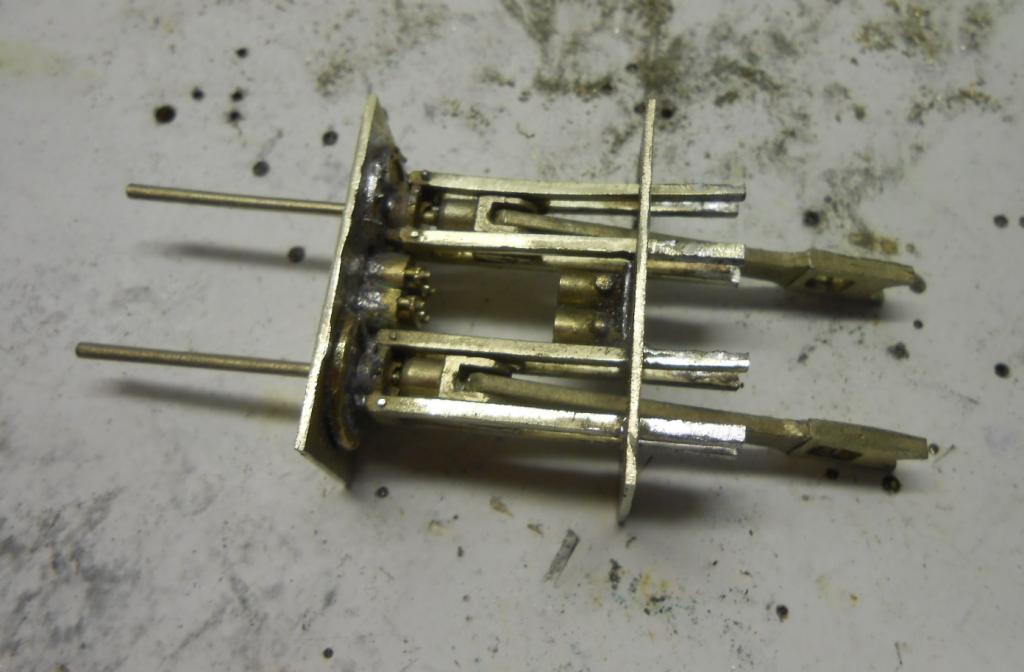
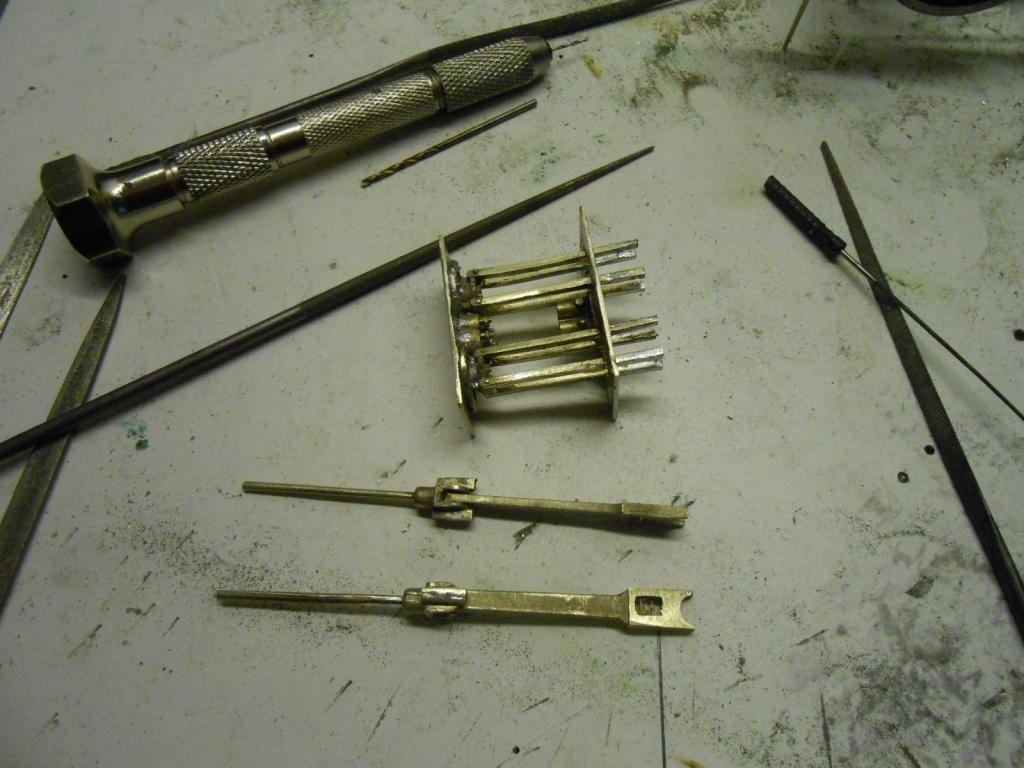


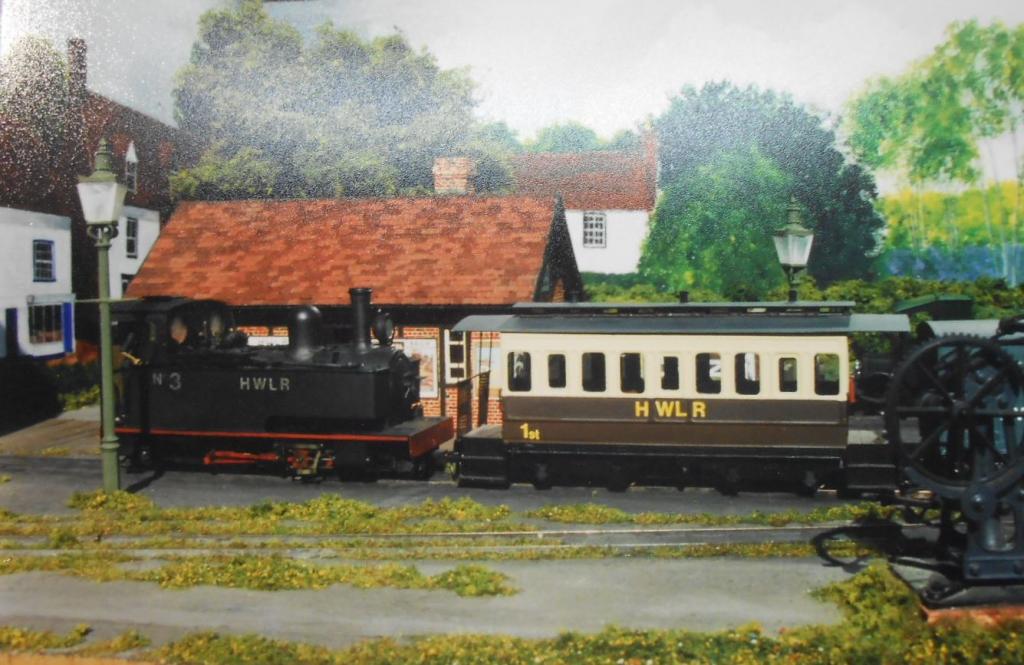
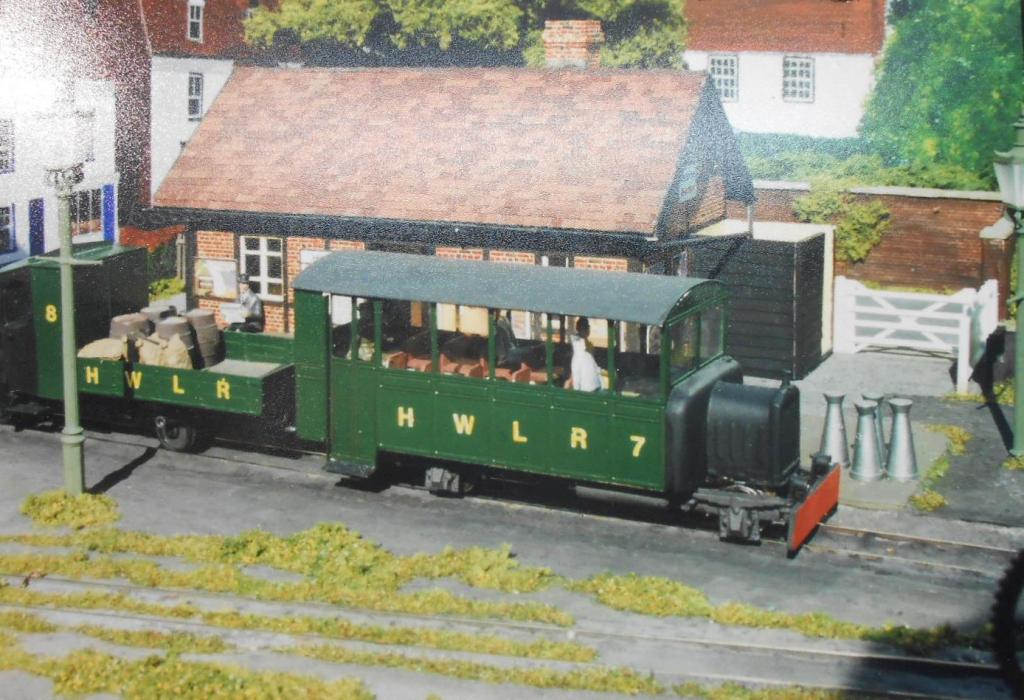
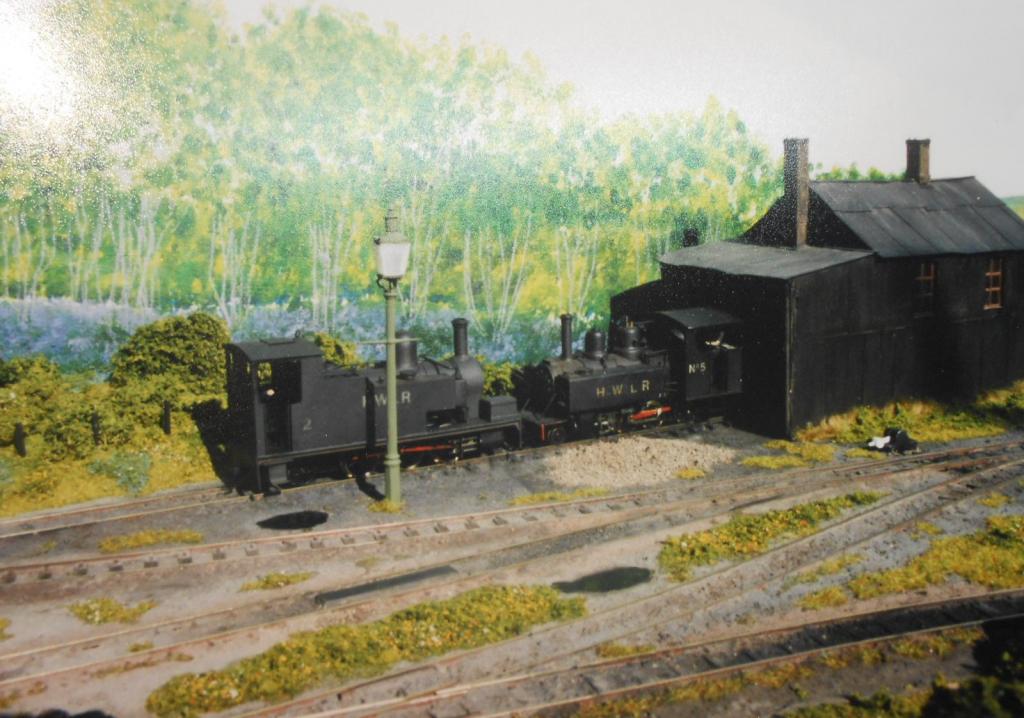
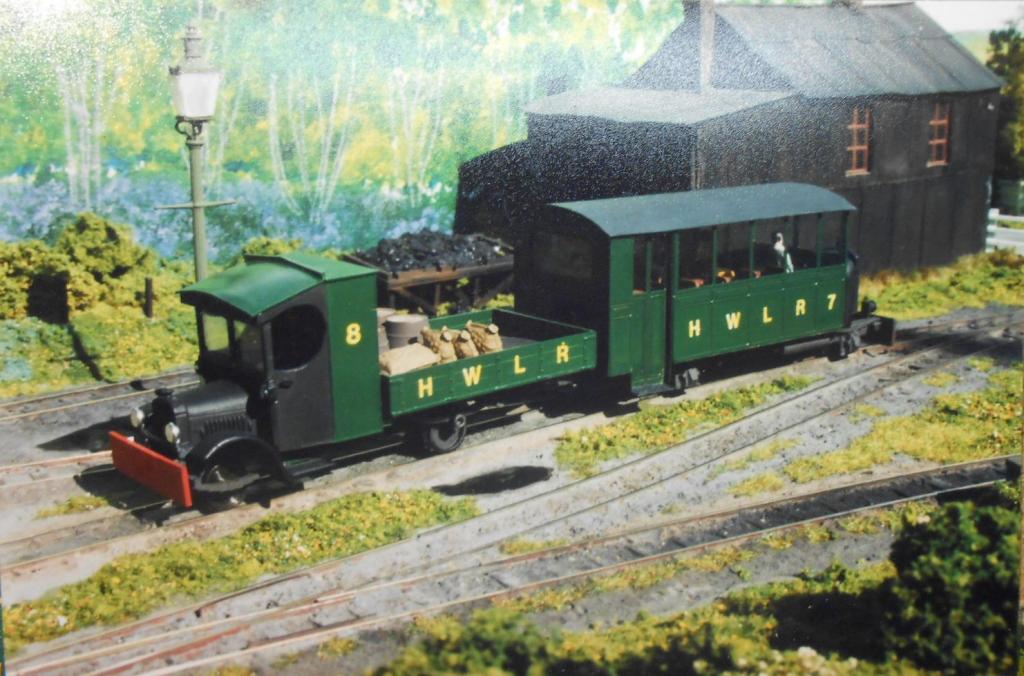
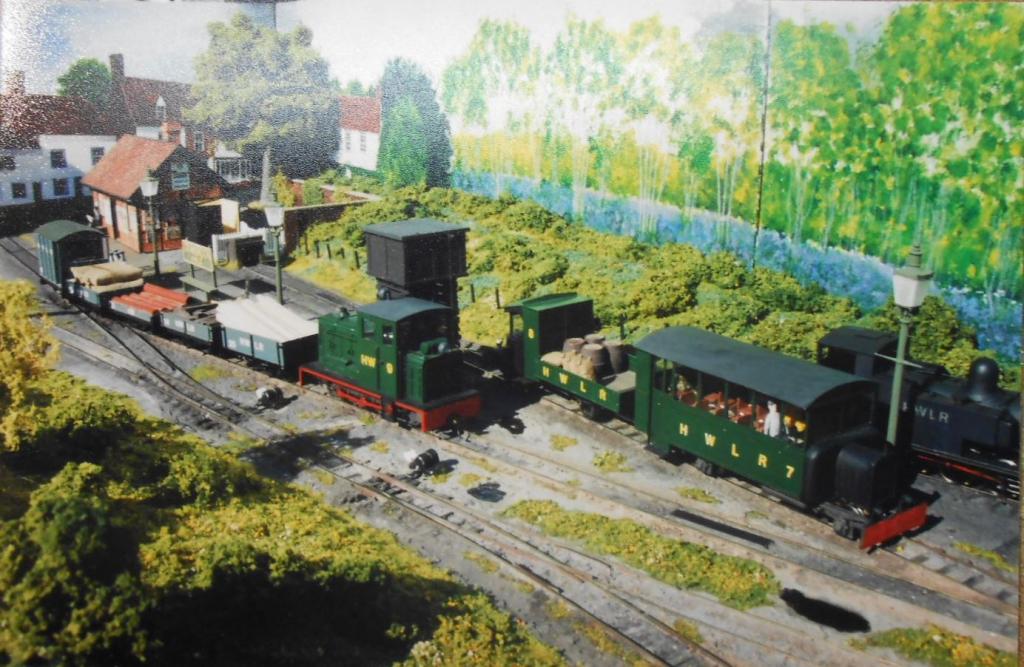
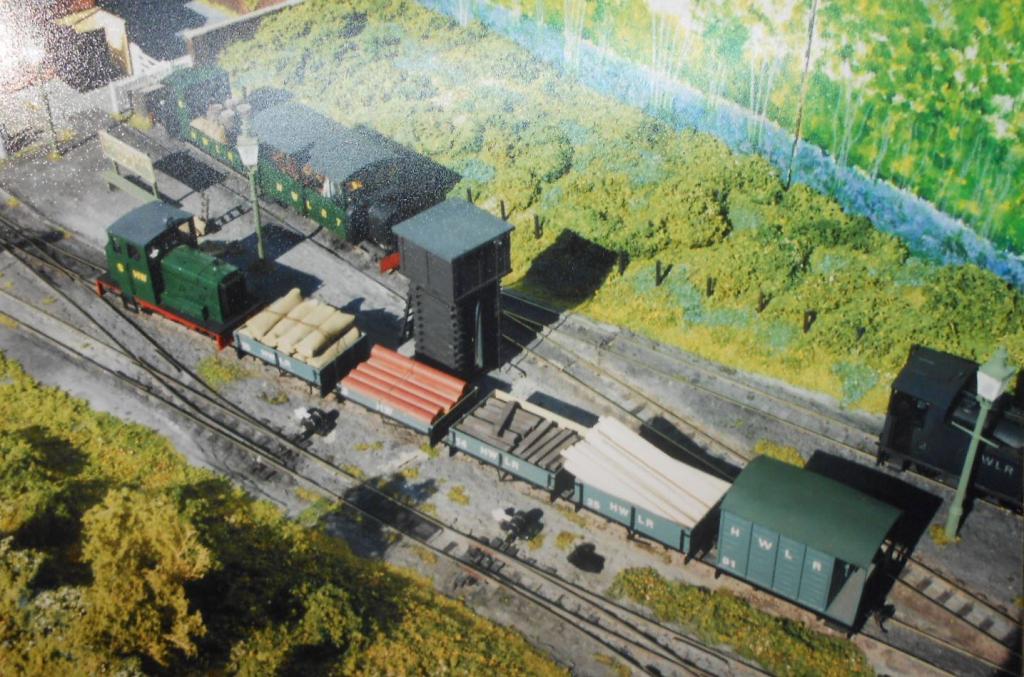

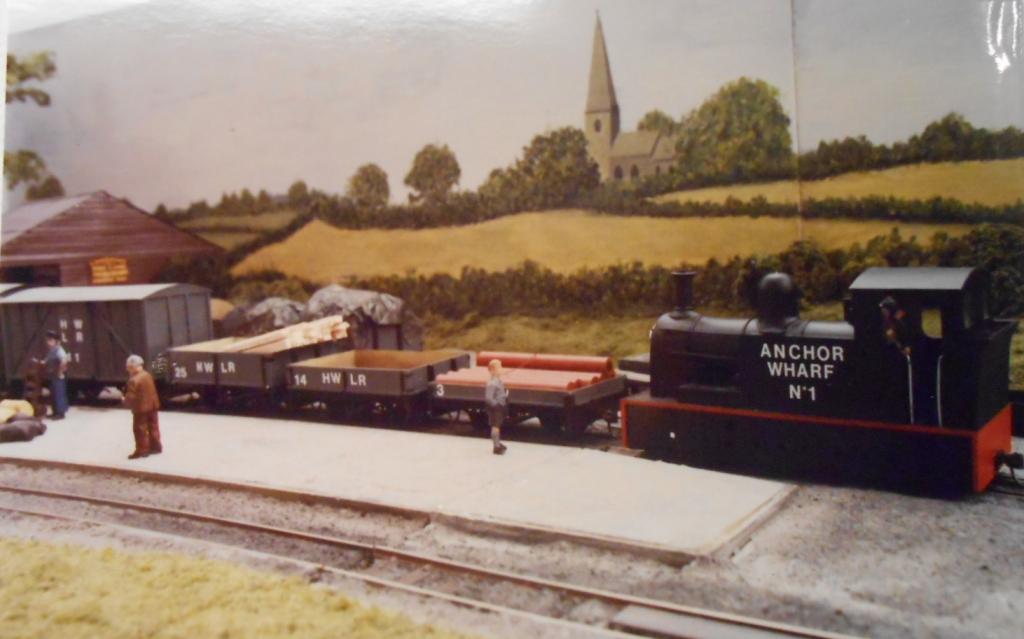
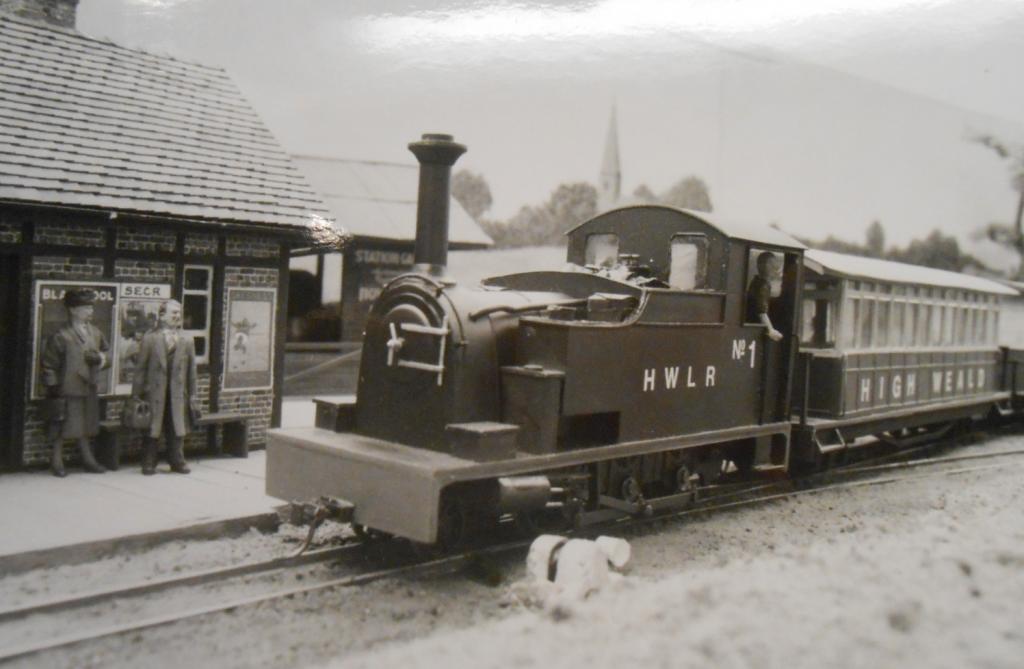
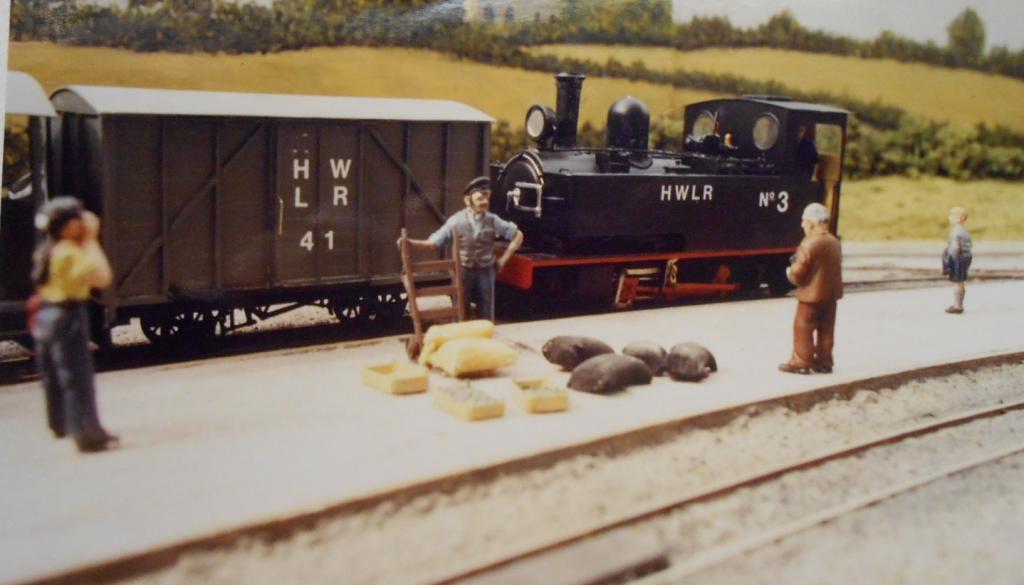
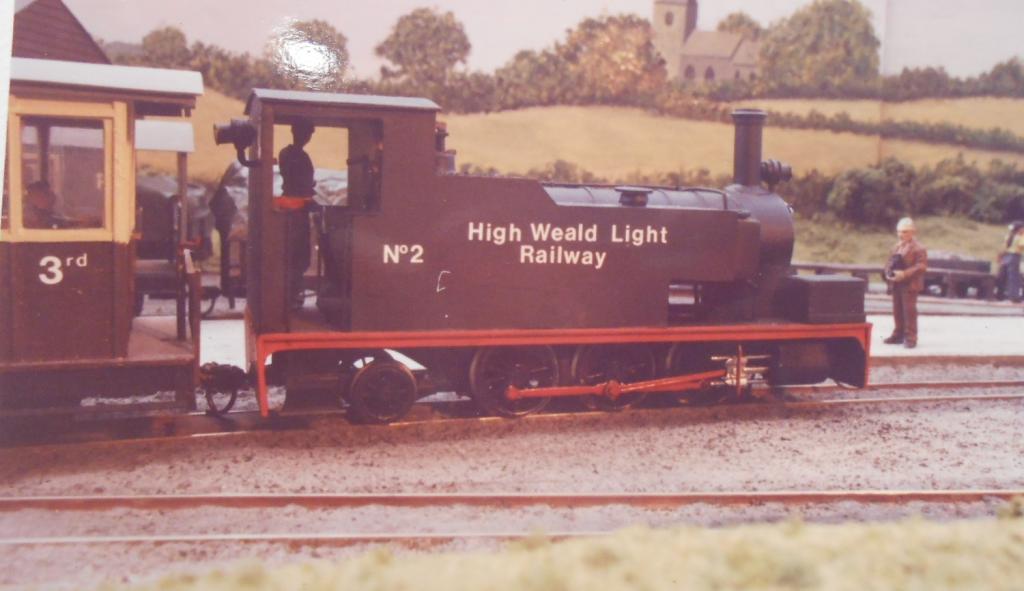
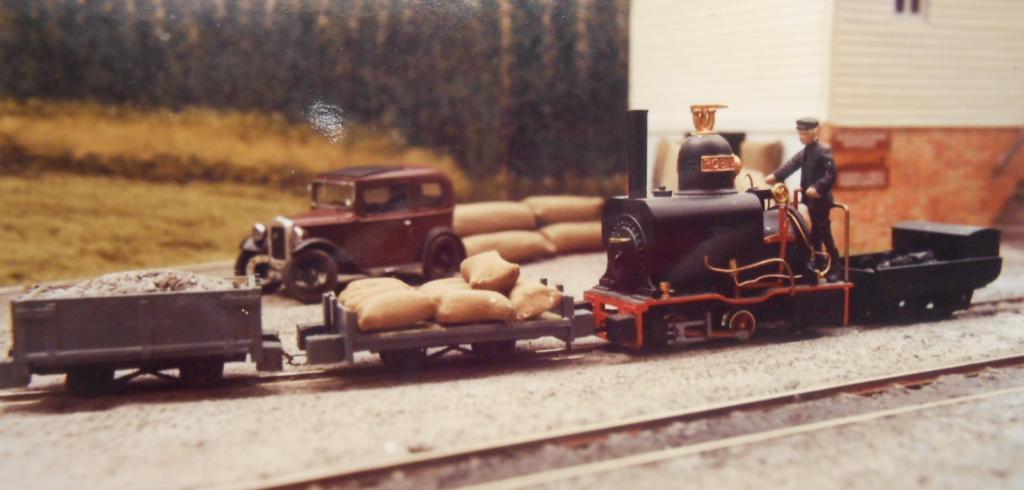

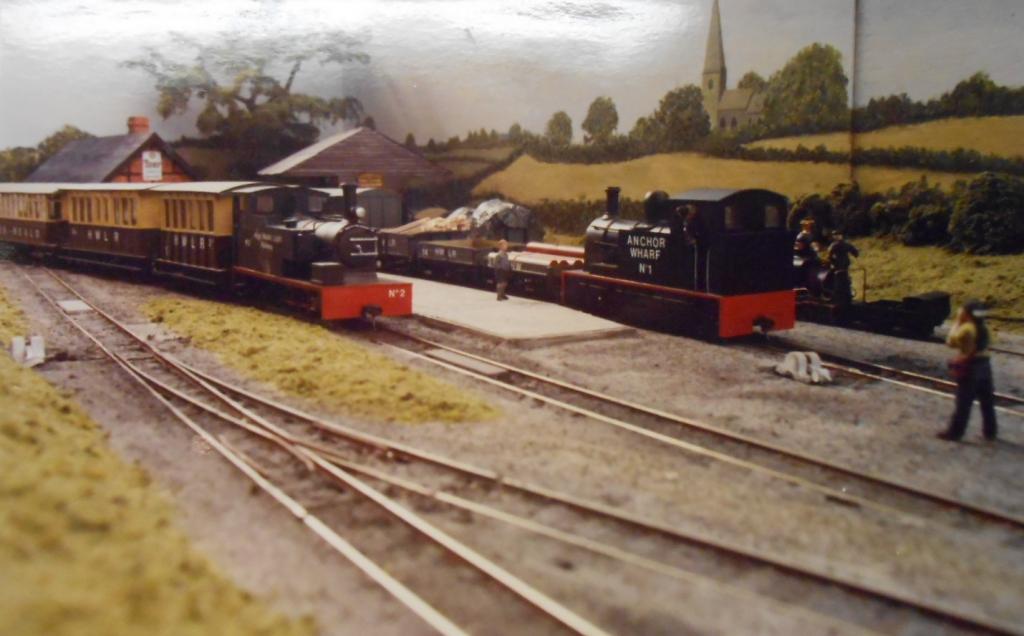
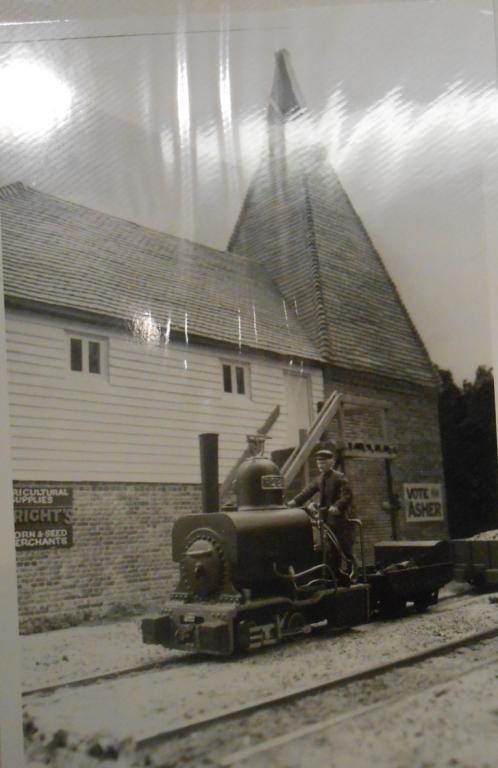
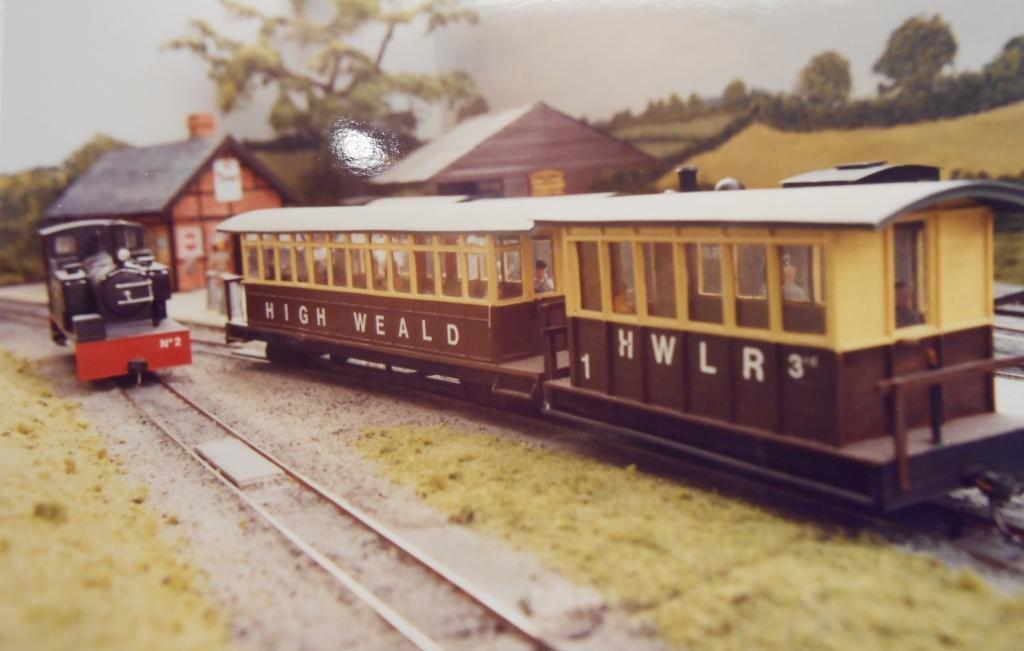


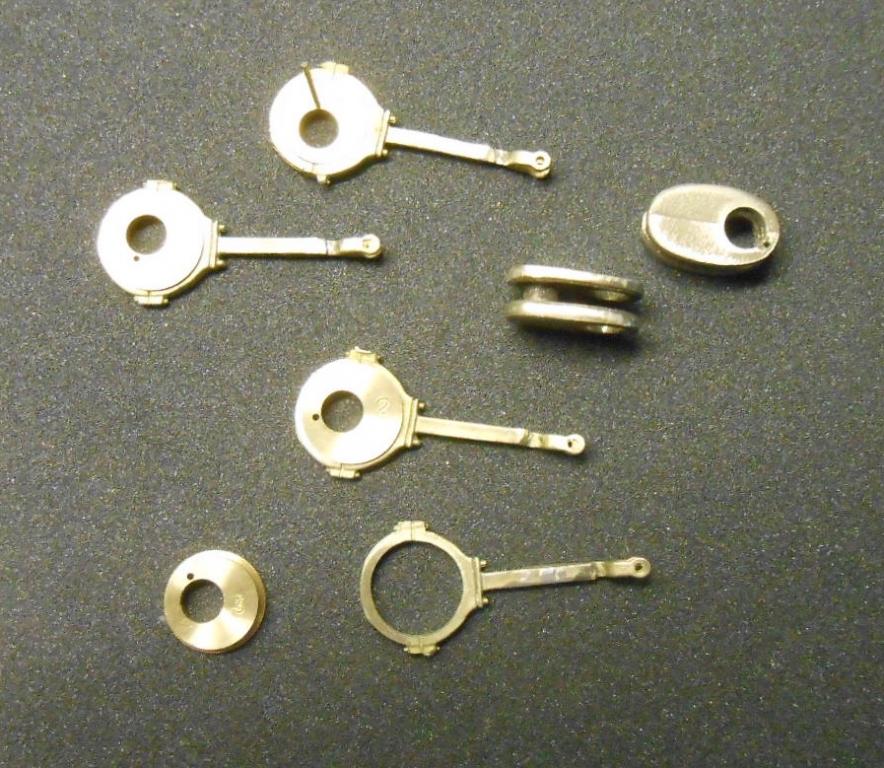
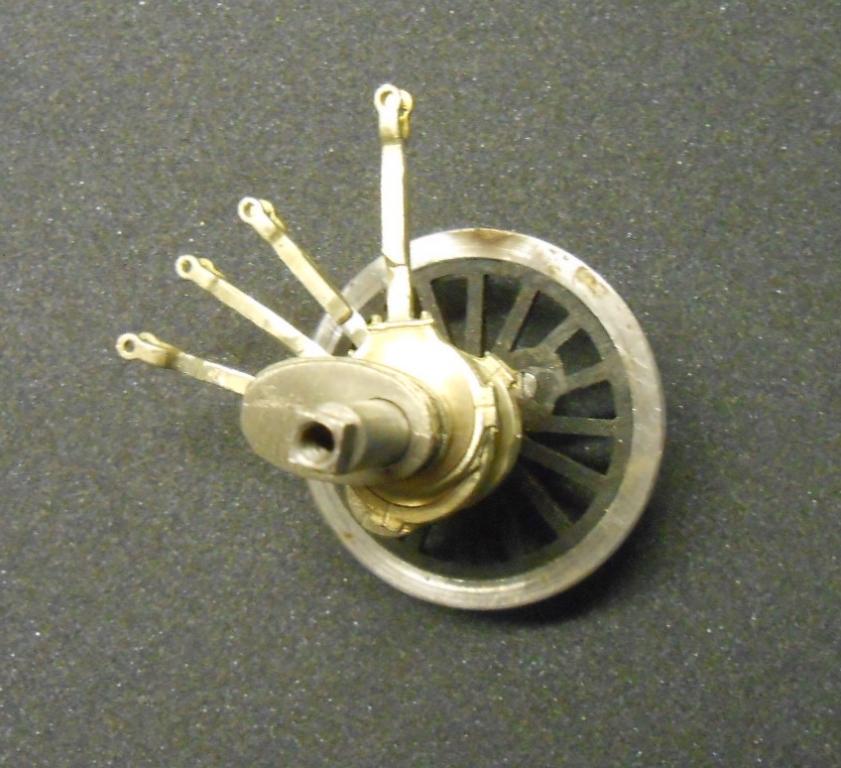
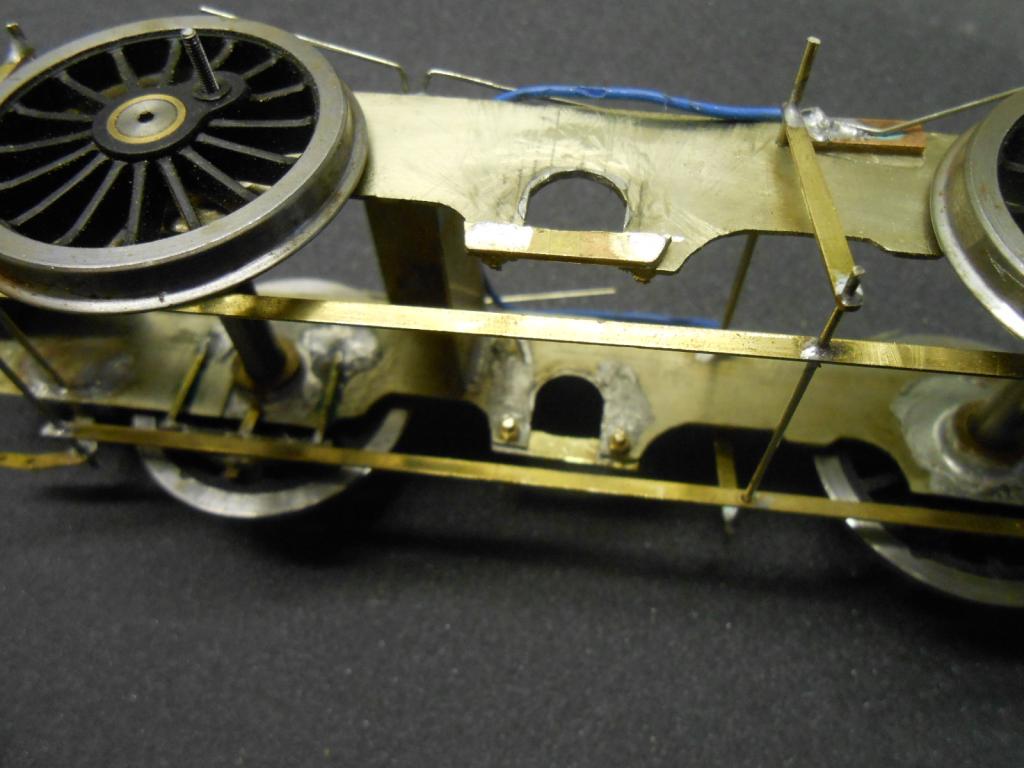

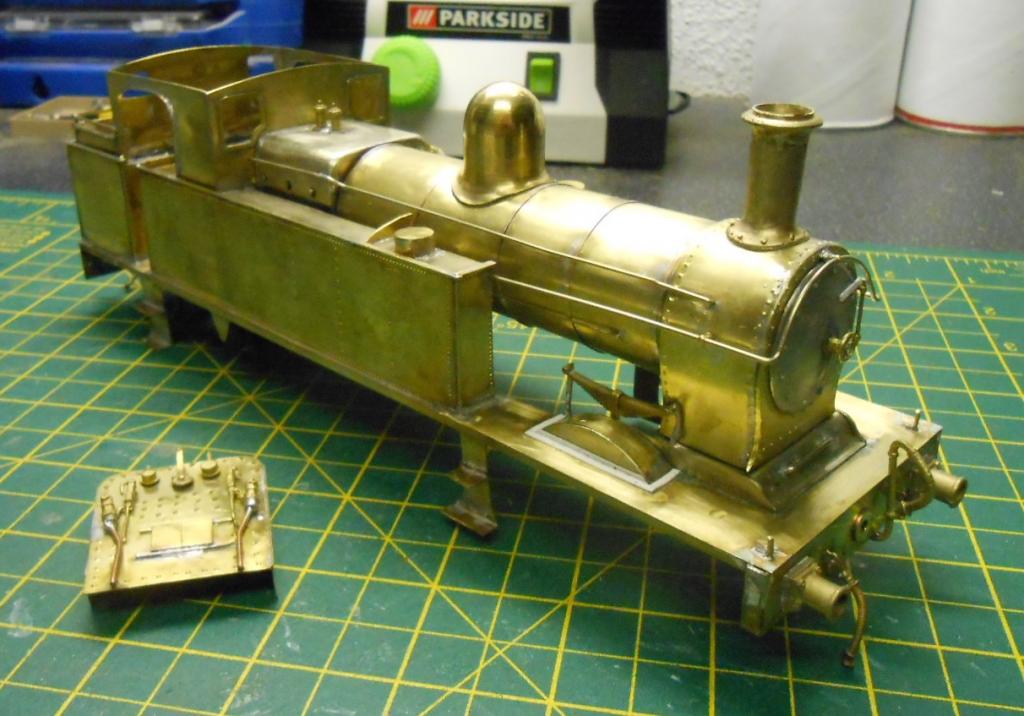
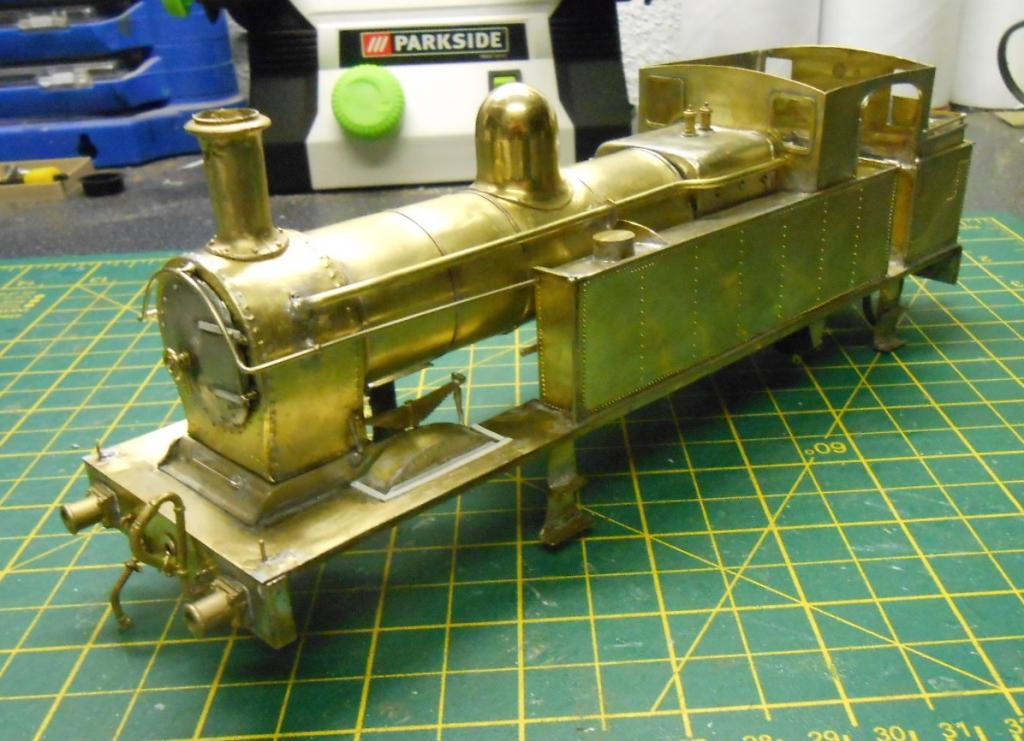

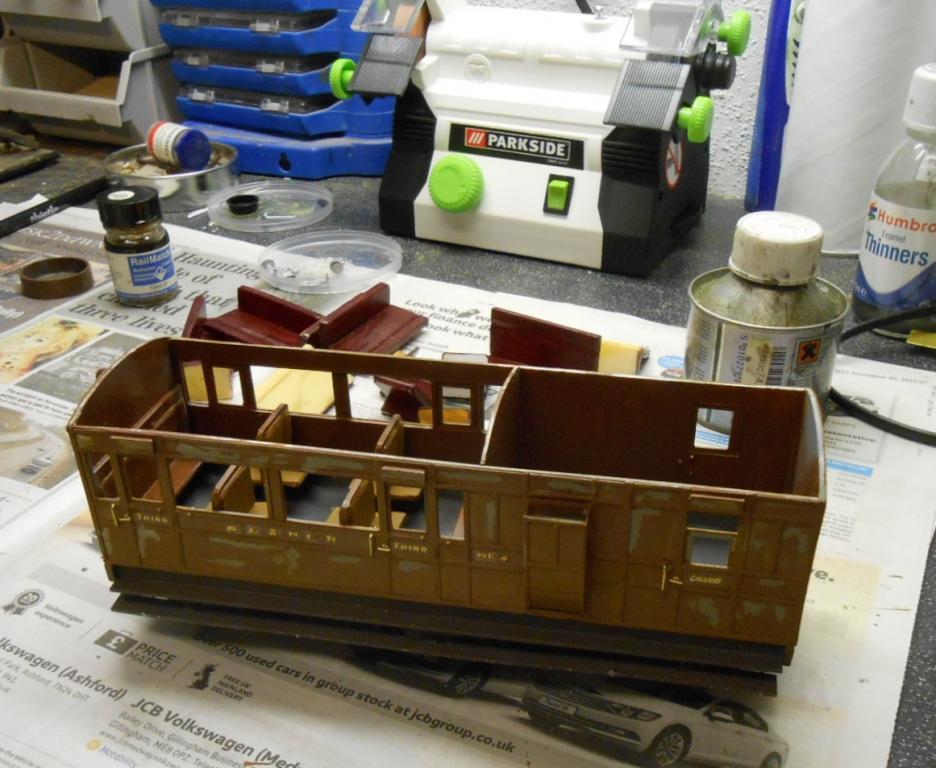
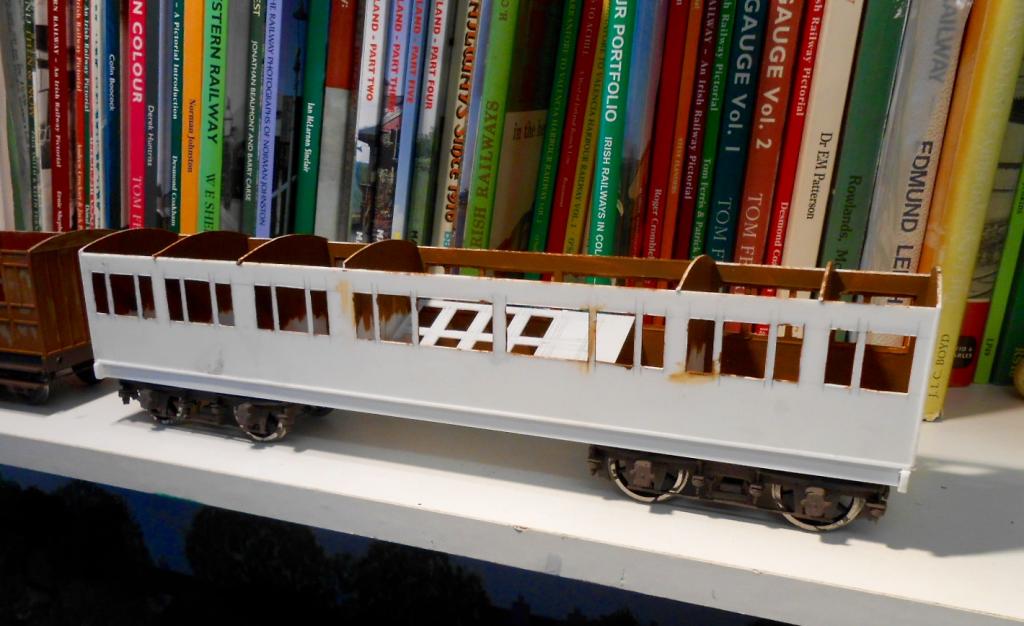
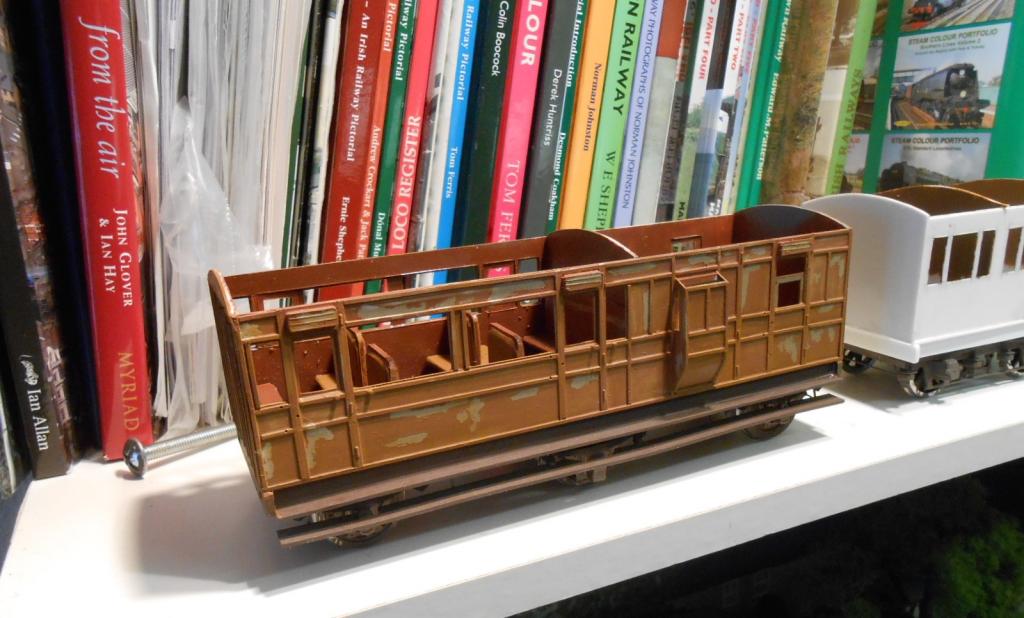
Prototype operation of models & layout design
in General Chat
Posted
Indeed, Stephen. Everything we do is a compromise. Autocouplings can be hands free, but are not prototypical and few people try to connect brake hoses. At shows, it is mostly about keeping things moving, but I do think it important to try and work in a railway like manner. So reasonable speed (but not too slow -shunting could be quite smart) but careful buffering up, with a full stop to couple up.
Always aim to have vacuum braked stock nearest the engine and ensure passenger trains are hauled by VAC braked locos.
A few years ago, I had the privilege of operating Trevor Nunn's East Lynn. Fabulous S gauge layout. Interestingly, all points and signals worked by the signal box operate from a hidden lever frame, but local points in the goods yard and on the wharf are worked by hand levers in situ, as per the prototype. Personally, I can live with the big hand from the sky and find it better than shuffling a train back and forth over a magnet to do my uncoupling. Kaydees and the like work very nicely for running round, but Alex Jacksons just seem like witchcraft to me!
The joy of the hobby is do do what we enjoy, feel comfortable with etc. So if folk are happy with a train set, that is fine, but I do worry a little that the knowledge of railway operation pre 1970 could be lost, because anyone born since then has not experienced it.